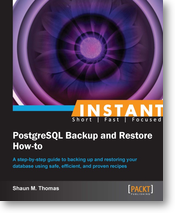Word of warning: this blogpost is about thing related to Bash (well, maybe other shells too, didn't really test), but since I found it while doing Pg work, and it might bite someone else doing Pg related work, I decided to add it to “postgresql" tag.
So, due to some work I had to do, I needed a quick, repeatable way to setup some Pg instances, replication between them, and some data loader. All very simple, no real problems. At least that's what I thought…
